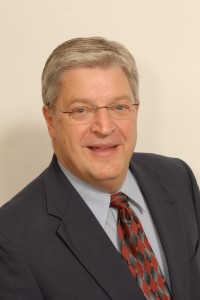Mayor Addresses Airport Expansion, High-Speed Rail
 StaceyPageOnline.com will be featuring a question and answer format once a month where Warsaw Mayor Joe Thallemer answers readers questions.
StaceyPageOnline.com will be featuring a question and answer format once a month where Warsaw Mayor Joe Thallemer answers readers questions.
Where does the airport runway expansion stand? What are the plans for CR 100 East and when is construction expected to begin?
At the budget hearings last fall, the city council supported and approved the appropriation of 2013 local match funds (7.5 percent of the total project cost) for the Design Phase of the power line lowering and road relocation.
Included in the Design Phase will be an environmental study for all of the land involved in both the power line relocation and the road relocation. Once the environmental study is complete, the Airport Layout Plan will be engineered to facilitate the expansion. Then, the design process will be initiated to engineer the lowering of the power lines. The road relocation design and engineering phase will then follow.
All of those studies will then be reviewed by the Airport Board for their approval. In 2014, pending the approval of the plans, the power line relocation construction will occur. The road relocation won’t occur until 2015.
While there is no final design plan for the road, the most recent proposal is to extend the runway 500 feet on either end instead of the full 1,000 feet on the east end. It is assumed that will reduce by 500 feet the road diversion.
How are talks/efforts to bring high-speed rail service to Indiana progressing? What is the proposed time frame to expect a service in Warsaw and how would it affect how we live and do business locally?
It is important to understand that the move to bring passenger rail service back to Warsaw is a very sophisticated undertaking involving multiple stakeholders and millions of dollars.
You may remember that the city of Warsaw, along with the other members of the Northeast Indiana Passenger Rail Association, contributed to a High Speed Rail feasibility study. This consortium of municipalities stretches from Columbus, Ohio, through Fort Wayne, Warsaw, Plymouth and Valparaiso, and into Chicago.
The purpose of the study is to provide a rationale for funding a high-speed rail corridor from Columbus to Chicago. The study looked at the economic impact to the communities, job creation as the result of the project construction, job growth that will occur as economic development is stimulated along the corridor, the increase in the tax base from that growth, the environmental benefits, and the overall cost benefits of the investment.
Funding millions of dollars a mile for track, signals, train stations, train equipment and facilities, the federal government will look at each business plan as this and many other proposals compete for the federal dollars to make this a reality. The project is estimated to cost over $1 billion.
Unfortunately, the earliest, most aggressive timelines suggest construction wouldn’t begin until 2017. I would expect it to take longer than that.
According to the report, it is estimated the ride to Chicago would take 1 hour 18 minutes and stop only three times on the way. This assumes high-speed rail maximum speeds of 110 mph to 130 mph.
Resumption of “regular” rail service (around 40 mph) to Warsaw could be an intermediate step in this process. While that could happen with current equipment and the existing rail structure, the emphasis of the consortium is the development of the high speed rail system.
To ask a question of the mayor, email [email protected]. All questions will be presented to Mayor Thallemer.
